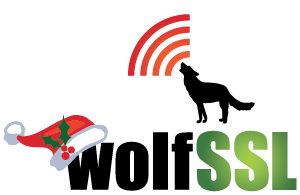wolfSSL is thrilled to announce that it is now possible to build FIPS 140-3 compliant applications using WebKit2GTK. This achievement comes from our recent porting efforts, integrating wolfSSL’s FIPS 140-3 certified cryptography (wolfCrypt) into core cryptographic libraries: GnuTLS, OpenSSL, and Gcrypt. For developers in government, defense, finance, healthcare, and other regulated industries, this eliminates a […]
Read MoreMore TagCategory: wolfCrypt FIPS
wolfSSL giving Libgcrypt FIPS 140-3 cryptography
The wolfSSL-libgcrypt integration demonstrates how a shim layer architecture can bridge two large, independently developed cryptographic libraries while maintaining API compatibility and achieving FIPS 140-3 compliance. This project specifically targets libgcrypt version 1.11.0 and the current and future work of the port can be viewed in the wolfSSL/libgcrypt-wolfssl repo. Architecture: The Shim Layer Approach The […]
Read MoreMore TagSecuring BoringTun with wolfSSL’s FIPS 140-3 Cryptography
We’re excited to announce that wolfSSL is taking the next step in its journey to bring FIPS 140-3 compliance to the WireGuard ecosystem. Following our successful ports of our FIPS crypto into both WireGuard-linux and Wireguard-GO, we are setting our sights on a new target: BoringTun. BoringTun is a popular, high-performance implementation of the WireGuard […]
Read MoreMore TagTop 15 FIPS Terms You Should Know – The Full Breakdown
We recently shared our top 15 FIPS acronyms and terms to help you get familiar with the basics. Now, let’s dive deeper into what each of these means and why they matter in the FIPS 140-3 certification process. FIPS – Federal Information Processing Standards FIPS are standards published by the U.S. federal government that specify […]
Read MoreMore TagTop 15 FIPS Terms You Should Know
Working with FIPS 140-3 can get confusing fast, especially with all the acronyms involved. To help cut through the noise, here are our top 15 FIPS-related terms: FIPS – Federal Information Processing Standards NIST – National Institute of Standards and Technology CMVP – Cryptographic Module Validation Program CAVP – Cryptographic Algorithm Validation Program ESV – […]
Read MoreMore TagMCP (Model Context Protocol) and FIPS-140-3 Requirements
Are you one of our customers tasked by the US federal government to implement their newly minted AI initiatives? Then go get a cup of coffee and sit down because you are going to want to hear what we have to say about the MCP (Model Context Protocol) and how it relates to FIPS 140-3. […]
Read MoreMore TagwolfSSL Advances FIPS Leadership with New Certificate #5041 and Evergreen FIPS 140 Strategy
EDMONDS, Wash., Aug. 4, 2025 /PRNewswire-PRWeb/ — wolfSSL Inc., a globally renowned leader in cryptography and network security solutions, announces the latest milestone in its FIPS strategy with the issuance of FIPS 140-3 Validated Certificate #5041 for the wolfCrypt cryptographic module. This marks yet another step forward in wolfSSL’s long-term strategy to deliver agile, secure, […]
Read MoreMore TagEmpowering Space Missions with NASA-STD-1006A Compliance
Space missions require strong security to guard against cyber threats. The wolfCrypt cryptography library meets all encryption requirements in NASA’s Space System Protection Standard (NASA-STD-1006A), providing lightweight cryptography suited for resource-constrained secure command communications. Understanding NASA-STD-1006A NASA-STD-1006A, titled “Space System Protection Requirements,” establishes agency-level guidelines to make NASA missions resilient against cyber threats. Approved in […]
Read MoreMore TagwolfCrypt FIPS 140-3 Certificate #5041 Now Validated
We’re proud to announce that our copy of wolfCrypt has officially again received FIPS 140-3 validation, listed under certificate #5041, posted on July 18, 2025 by NIST. This validation reflects our continued commitment to building secure, standards-compliant products using rigorously tested cryptography. This FIPS 140-3 version of wolfCrypt improves on the earlier 140-2 validation in […]
Read MoreMore Tag802.1AE-MACsec with wolfCrypt
What is 802.1AE? 802.1AE (MACsec) is a network layer 2 protocol for protecting ethernet frames with encryption and authentication across ethernet links. It introduces a new MACsec ethernet frame format, which carries an additional security tag (SecTAG) field inserted between the ethernet header and payload, as well as an integrity check value (ICV) trailer field […]
Read MoreMore Tag
